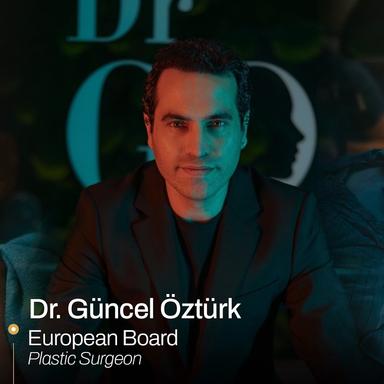PRP Hair Treatment Success Rate: Why It Doesn’t Work for Everyone

Prathyusha Itikarlapalli
- Content Writer

Guncel Ozturk, MD, FEBOPRAS
- Reviewed by

Key Takeaways
- PRP for hair treatment is a safe and successful method with minimal risks or side effects for men and women. It shows positive results for the early stages of baldness. However, it is not recommended for candidates with dysfunctional platelets or low blood platelet counts.
- The PRP hair treatment success rate depends on various patient-associated factors, such as age, gender, lifestyle, hair loss type and severity, and the patient’s ability to follow the aftercare measures.
- Treatment-related factors such as platelet concentration, injection depth, and frequency also influence the success rate. Getting PRP treatment from a qualified and skilled professional can assure success.
How Often PRP Hair Treatments Are Chosen?
Besides hair transplantation surgeries and topical applications, Platelet-rich plasma therapy is one of the popular hair loss treatments recommended by dermatologists. While hair loss is a growing concern due to age, lifestyle, genetic, and health factors, the reliance on simpler, non-surgical options is growing exponentially. Simple procedures, easy recovery, and lower complications make non-surgical methods like PRP an undeniable option. In fact, PRP for hair loss is one of the most sought-after non-surgical methods available today.
The platelet-rich plasma method involves drawing a small sample of the patient's blood to concentrate the plasma, rich in growth factors and cytokines. This will be carried out by advanced centrifugation methods to separate the liquid plasma from the cellular components. The fluid plasma separates along with platelets rich in growth factors that stimulate hair regrowth at the follicular level, improving hair thickness and volume and slowing down further hair loss over time.

While effective results require multiple PRP sessions, the method is still popular mainly for its lowest complication rate. The PRP hair treatment side effects are minimal as the method relies on the patient's own blood sample. It’s essential to understand what “success” truly means for PRP before deciding if the procedure is right for you.
PRP Hair Treatment Success: What Does It Mean?
Success in healthcare is rarely one-dimensional, and PRP hair loss treatment is no exception. Moreover, success varies with the patient's perspectives and expectations. Here are a few pointers on what a successful PRP treatment can look like.
- Minimal side effects
- Reduced hair shedding
- Increased hair thickness
- Improved hair volume and density
- Reversal of receding hairlines and hair thinning
- Higher patient satisfaction and boost in confidence
Note that the dimensions of success vary with the patient’s expectations. It isn’t limited to the pointers mentioned here. For some, it may relate to lower sessions or quick results. It’s important to discuss them in detail with the dermatologist or trichologist performing the procedure before treatment.
PRP Hair Treatment Success Rate: What Research Says?
Several research and clinical studies have revealed PRP as an effective method to treat hair loss. However, there is still no exact consensus on the success rate of treatment. Most studies have focused on understanding its effects at the cellular and molecular levels and evaluating its broader impact on hair restoration outcomes. They revealed a significant improvement in hair density and thickness with a slowdown in hair fall. At the cellular level, the key lies in the alpha granules present within the activated platelets. These granules release growth factors that stimulate hair follicle activity and promote regrowth through multiple biological mechanisms such as [1] [2]
- Proliferation of dermal papillae
- Active conversion of telogen to anagen phase
- Thickening of existing hair shafts
- Promote new blood vessel formation, stimulating new hair follicle generation
Getting deeper, several studies revealed the active involvement of growth factors such as platelet-derived growth factor (PDGF), transforming growth factor beta (TGF-β), vascular endothelial growth factor (VEGF), epidermal growth factor (EGF), and insulin-like growth factor-1 (IGF-1). In addition to growth factors, the bioactive factors present within the platelet-dense granules were found to increase membrane permeability.[3] These cellular activities are well-known for initiating and prolonging the anagen phase (active growth stage) of hair follicles. While research supports the potential of PRP for hair loss, the actual success depends on several factors. The outcome, in fact, is dependent on a mix of biological and treatment-related factors.
Factors That Influence PRP Hair Treatment Success Rate
Below, we detailed various factors that influence the PRP hair treatment success rate.
Patient Age
The success rate of PRP hair treatment is better in younger individuals than in aged patients. While around 30 years of age is considered ideal, patients between 18 and 40 show positive responses to PRP for hair loss. PRP can reverse baldness during its early stages, while advanced and serious stages of hair loss are found to be less responsive. Further, younger individuals have healthy hair follicles that have a greater capacity for regrowth. However, note that PRP is usually not advised for individuals under 18 years of age due to limited research and clinical studies.
Patient Gender
Both men and women with healthy hair and stable body conditions can expect positive results with PRP hair loss treatment. However, the terms of success vary with gender. Hair loss is different in both men and women. Male pattern baldness is evident at the temporal and vertex areas, while female pattern baldness is more diffused with a widened part.
Speaking results, the PRP hair treatment success rate male relates to reduced hair fall and increased follicle thickness and density. On the other hand, the PRP hair treatment success rate female relates to reduced hair fall and enhanced strand length, thickness, and volume. Although these considerations are more related to the patient’s realistic expectations, the underlying hormonal causes impact the success rate. Studies suggest that the PRP method had a stronger effect on hair density in males than in female patients.[4]
Diving deeper to the molecular level, hair loss in men majorly accounts for DHT action, causing shrinkage of hair follicles. PRP hair loss treatment only deals with hair follicle growth and does not address the underlying hormonal causes. So, PRP treatment for hair loss in men is usually coupled with minoxidil or finasteride medications for better results. This is quite different for women. Stress and hormonal changes during pregnancy or childbirth cause shaft weakening, leading to hair fall. These are reversed using PRP injections, showing effective results.
Hair Loss Type
The success rate of PRP injections depends on the type of hair loss. While hair loss occurs for various reasons, healthy candidates suffering from androgenic alopecia (pattern baldness) can expect effective results. Although the method shows positive results for hair loss due to alopecia aerate and scarring hair loss, the research and clinical studies are still limited.[5] The success of these candidates depends on other factors like genetics, lifestyle, hair loss severity, and other combined therapies.
Hair Loss Intensity
The success rate of the PRP method for hair loss in candidates with mild or moderate stages of baldness is quite appreciable. The platelets and active growth factors stimulate the viable hair follicles, enhancing hair density in thin hair areas. However, they are ineffective in completely bald areas where the follicles are no longer functional. As a result, severely bald candidates will see less dramatic results than those in the early stages of baldness.
Life Style
The candidate's lifestyle significantly impacts the success rate of PRP hair treatment. While stress is a major culprit in hair loss, reducing stress and practicing a healthy sleep schedule can boost the success rate. Smoking and drinking alcohol may reduce blood circulation and limit the oxygen reaching your hair follicles, potentially affecting hair health.
Cutting them down, relying on a healthy diet, and following a strict exercise regimen also enhances the PRP success. After all, PRP hair treatment success largely speaks to how your body heals and hair follicles rejuvenate and regrow.
PRP Injections
The concentration, depth, and frequency of PRP injection influence the success of hair loss treatment. While plasma rich in platelets showed better hair regrowth, the longevity of results depends on the frequency of PRP injections, which in most cases vary with the candidate. It’s worth noting that studies aimed at standardizing the effective platelet concentration still need to be carried on for effective clinical outcomes.[6]
On the other hand, infection and other complications reduce the chances of success. Using appropriate equipment and performing the method under sterile conditions reduces the risk of infections. Approaching a qualified dermatologist or an experienced and skilled trichologist can assure you of treatment success. You may rely on the provider's patient success rate. For instance, check out the 3 month PRP for hair loss before and after images before making your choice of treatment. Opt for the providers offering remarkable results.
While several factors influence the success rate of PRP hair loss treatment, it’s important to understand that your results may not mirror those of your friend or colleague. Each person’s hair loss journey is unique, and outcomes can vary based on individual biology, the stage of hair loss, overall health, and lifestyle habits. All you can do is have realistic expectations, get it done by the right professional, and strictly adhere to the discussed aftercare measures.
How Often PRP Hair Treatment Fail?
PRP hair loss treatment is safe and effective, with good patient satisfaction rates.[7] The chances of failure are generally low when the procedure is performed on the right candidate by an appropriate professional. Only the right candidates can expect successful results, and the procedure, when performed for patients with platelet dysfunction or a low count of platelets, can lead to failure. [8] Although rare, the bad technique of carrying it out also causes failure. This means conditions that lead to compromise over sterility either during plasma preparation or injection can cause local or systemic infection, which ends up as PRP failure.
How Often To Get PRP for Hair Loss?
You will need 3-4 PRP injections spaced between 4-6 weeks for the initial hair growth and volume. Following this will be follow-up injections every 4-6 months to maintain the obtained look. While the success of PRP treatment is reflected in improved hair volume, density, and length, the frequency of sessions and consistency of maintenance play a crucial role in achieving lasting results. This indeed depends on the initial regrowth pattern, hair loss severity, and body response. Most patients require maintenance injections every 4-6 months. However, the exact duration varies with the case.
How Often PRP for Hair Loss Is Truly Needed, and When Is It Considered Too Much?
Depending on the extent of baldness, you should be able to see PRP for hair loss treatment results within a few months. The doctor will schedule maintenance sessions based on the initial results. Typically, the maintenance sessions are scheduled every 4-6 months in order to maintain permanence. Some commercial clinics might push for more frequent sessions than medically necessary. They may make a few vague promises of “faster” or “enhanced” outcomes. However, it's essential to know that these extra sessions, without scientific backing, may do little beyond inflating your PRP hair treatment cost. We recommend you discuss the expected frequency of injections along with a clear price breakdown. Some clinics offer packages for the initial injections covering the PRP hair treatment price, along with diagnostic tests or consultations. A few others charge separately for maintenance sessions. Check out with your provider before opting for the treatment inorder to assess whether you're being upsold or charged right.

Being minimally invasive, the platelet-rich plasma therapy method for hair loss is safe and effective. The PRP hair treatment success rate is generally high when performed rightly for the right candidate. While various factors influence the success rate of PRP for hair loss, it is crucial to keep an eye on candidate selection. Getting it done by qualified and experienced professionals ensures the success of treatment.
Ready to take the first step towards a fuller, and healthier hair? Consult with a certified PRP specialist today to find out if you're the right candidate because when it’s done right, the results speak for themselves. Don’t wait—your confidence is worth it. Sign up with Envoy Health to connect with top professionals around the world. With Envoy Health by your side, your options are limitless, and world-class care is just a step away.
References
- Efficacy of Platelet-Rich Plasma in Males With Androgenetic Alopecia
- Platelet-rich plasma for androgenetic alopecia: A review of the literature and proposed treatment protocol
- Platelet-rich plasma for androgenetic alopecia: A review of the literature and proposed treatment protocol
- Effectiveness of Platelet-Rich Plasma in the Treatment of Androgenic Alopecia: A Meta-Analysis
- Platelet-rich plasma: Does the cure for hair loss lie within our blood?
- Platelet-Rich Plasma Effectiveness in Treating Androgenetic Alopecia: A Comprehensive Evaluation
- Patient Satisfaction and Clinical Effects of Platelet-Rich Plasma on Pattern Hair Loss in Male and Female Patients
- Platelet-Rich Plasma and Its Use in Hair Regrowth: A Review
Disclaimer
The information in this article is for educational purposes only and does not replace medical advice. Always consult your doctor before starting any treatments.
PRP for hair loss treatment can fail when performed wrongly. Care must be taken during plasma preparation and injection. The inability to maintain sterile conditions can cause infection, leading to failure due to localized or systemic infection.
PRP does not stop hair loss permanently; you will need a maintenance injection to maintain the results. Platelets containing growth factors and cytokines push hair follicles from the telogen phase to the active growth phase, thereby reducing hair fall. However, booster doses are required for sustained results.
While PRP injections regrow hair, the results are not permanent. The growth factors and cytokines promote hair growth associated with new strand formation and improved follicle health. However, maintenance sessions are typically required to sustain results over time. They are typically scheduled for every 4-6 months, depending on the individual.
Yes, PRP treatment regrows hair, thanks to the cytokines and growth factors present in the platelet-enriched plasma. Growth factors such as PDGF, TGF-β, VEGF, EGF, and IGF-1 stimulate viable hair follicles in bald areas to promote hair regrowth. They increase membrane permeability and blood vessel formation, which enhances oxygen supply to viable hair follicles. The PRP components are also involved in the conversion of dormant follicles into an active growth phase. Besides, they prevent hair fall by prolonging the active growth phase of hair follicles.
PRP method for hair is a safe and successful with minimal side effects when performed on the right candidate. PRP offers positive results in patients with mild and moderate stages of baldness and is less effective in severely bald candidates.
Send me the list